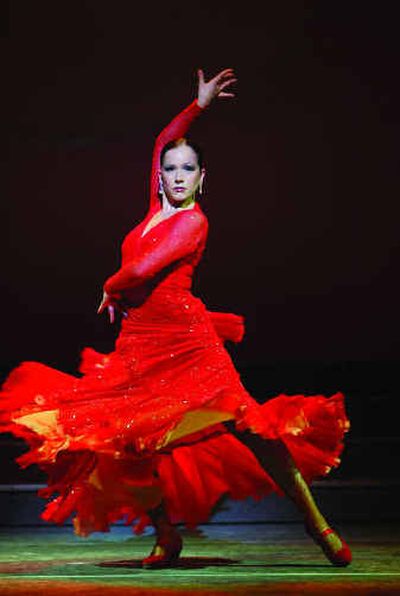Hearing footsteps

Plenty of people have seen “Riverdance” multiple times.
This Celtic step-dancing extravaganza inspires that kind of loyalty. Two touring companies are constantly criss-crossing the world. In Spokane alone, this show has sold close to 40,000 tickets in two previous visits in 1998 and 1999.
However, it would be hard to find anybody who has seen “Riverdance” more often than Padraic Moyles, a Dublin-born transplant to New York City.
How many times?
“Oh, I think a couple of thousand,” said Moyles.
Moyles is no detached observer. He is the principal dancer in this tour of “Riverdance,” which arrives at the Spokane Opera House Tuesday for eight performances. He has the role originally made famous by Michael Flatley.
Yet Moyles certainly didn’t begin with that role.
“In November of 1997, I auditioned for the show in New York and got lucky,” said Moyles. “I was a troupe dancer at first, which I still do today on different occasions. I gradually worked my way up to the principal role, and I have been doing that for a year, as of September.”
So Moyles ought to have perspective on exactly what made this show such an unlikely hit and why it has remained such a top touring draw ever since its 1995 debut.
“It’s a lot of different things,” said Moyles, by phone from a tour stop in Seattle. “It has a great family atmosphere – it’s a show for everybody and anybody. And the music in the show is captivating. I am still not sick of the music, and I hear it every night.”
The music is one of the great overlooked assets of “Riverdance.” Most people think of it, justifiably, as a dance show. Yet Bill Whelan’s original score incorporates many of the charms of the traditional Irish forms – what Whelan calls the country’s “quirky, mischievous, evasive dance tunes and dark proud airs.”
He uses many of the traditional Irish instruments, including whistles, bodhrans and the famously temperamental bagpipes. Yet Whelan consciously chose to break tradition as well.
“I had deliberately written pieces with rhythmic patterns that were foreign to traditional Irish music,” Whelan said in a tour press release. “But after the initial raised eyebrows, the thrust of the principal dancers’ creativity took hold and I can still remember the excitement as they began to fashion their first steps.”
Whelan’s score also goes far beyond Ireland’s shores. He wrote pieces which reflect the show’s global scope. One number in the show has an Eastern European feel, performed by members of the Moscow Folk Ballet. Another number is in a Spanish style, to accompany a flamenco dancer.
“It shows how these cultures have intertwined,” said Moyles. “And then there is also a number with American tap dancers. There is a kind of a dance-off (between the tap dancers and Celtic step-dancers). That number is pretty much the show-stopping number.”
Unlike “Lord of the Dance,” Flatley’s “Riverdance” spin-off, all of the music is performed live on stage. A five-piece band is joined by three singers and a squad of drummers.
The dancers remain, of course, the show’s big stars. The dance troupe consists of 32 Irish dancers, six Russian folk dancers, two American tappers and one flamenco dancer. Keeping them all healthy is a job that would challenge any NFL trainer.
“It takes a serious pounding on our legs,” said Moyles. “It takes people in great physical condition to do this. We have physical therapists and massage therapists and fitness instructors who warm us up and cool us down. There are lot of injuries, mostly repetitive stress injuries, like shin splints and problems in the feet. I am right now dancing with two bad shins, but if you stay disciplined, you can get through any injury.”